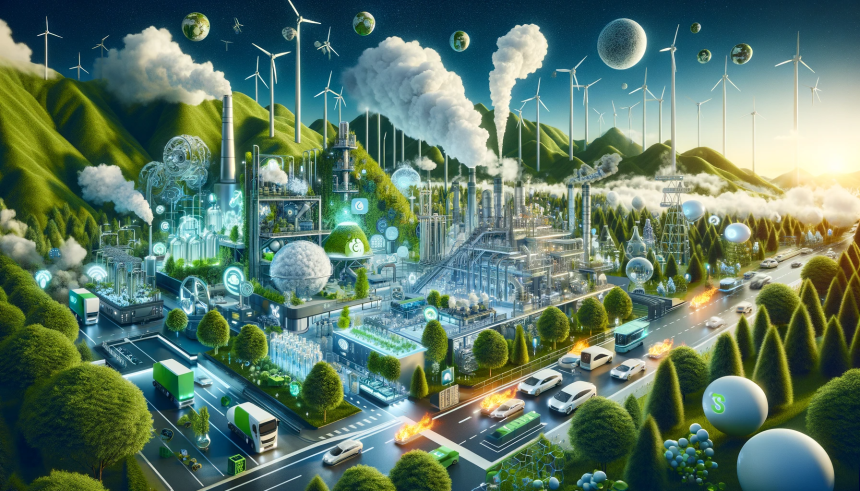In the tapestry of today’s world, where the threads of environmental concern are interwoven with the fabric of our future, the transformative art of converting carbon dioxide (CO2) waste into a pantheon of valuable products stands as a beacon of green innovation. This radical paradigm shift is not merely a response to the menacing specter of global warming; it heralds a new epoch of sustainable industrial and economic evolution.
The CO2 Conundrum: From Peril to Potential
Amidst the swirling mists of environmental challenges, CO2 emissions birthed largely from the bowels of fossil fuel combustion, loom large as potent agents of the greenhouse gas effect and global warming. Traditional combat strategies have predominantly orbited around diminishing emissions or trapping and entombing this gaseous byproduct. Yet, these conventional tactics have often sidestepped a visionary alternative: transmuting this abundant ‘waste’ into a treasure trove of utility.
The Metamorphosis of CO2: A Global Endeavor
The alchemical dream of morphing CO2 into a spectrum of valuable commodities is no longer tethered to the realm of science fiction. Globally, a vanguard of scientists and innovators is championing this cause, leveraging chemical reactions—often driven by the elixir of renewable energy—to transfigure CO2. The resultant bounty spans a diverse range, from alternative fuels to novel construction materials, even permeating the domain of everyday consumer products.
The Fuel of Tomorrow: Synthesizing Sustainability
A cornerstone of this green crusade is the genesis of synthetic fuels. Processes like electrolysis are the crucibles wherein CO2 undergoes a metamorphosis into liquids like ethanol or methanol. These eco-friendly avatars of traditional fuels burn with a cleaner conscience, promising a revolution in the realm of transportation.
Constructing Green Legacies
The construction industry, too, is being reimagined through the lens of CO2 innovation. Technologies that imbue concrete with CO2 not only curtail the carbon footprint but also fortify the strength and durability of these materials. This dual triumph marks a significant stride towards a sustainable architectural future.
Everyday Products: A Sustainable Touch
The ambit of CO2’s utility extends its arms to embrace everyday objects. Research is being channeled into harnessing CO2 for the fabrication of plastics and textiles, offering a green alternative to the conventional petroleum-based lineage.
Navigating the Terrain of Challenges and Prospects
The journey towards the widespread adoption of CO2 conversion technologies is strewn with obstacles and prospects. The terrain demands hefty investments in research and scale-up operations, alongside fostering a market craving for products born from CO2. These challenges, however, also unfurl opportunities for innovation, economic growth, and the germination of a circular carbon economy.
The Role of Policy and Collaborative Synergy
In this odyssey, the compass of government policy and incentives is pivotal. Through financial support and collaborative synergy among industries, academia, and policymakers, the wheels of CO2 conversion technologies can be oiled towards greater innovation and integrated solutions.
In Summation
The transformation of CO2 waste into a myriad of useful products is not just a green crusade; it is a testament to the indomitable spirit of human ingenuity. It is a clarion call to a future where the specters of climate change are met with innovative resilience, painting a picture of a sustainable, carbon-neutral world. This journey from CO2 waste to green products is a narrative of environmental necessity, economic prudence, and the unyielding power of human innovation.








